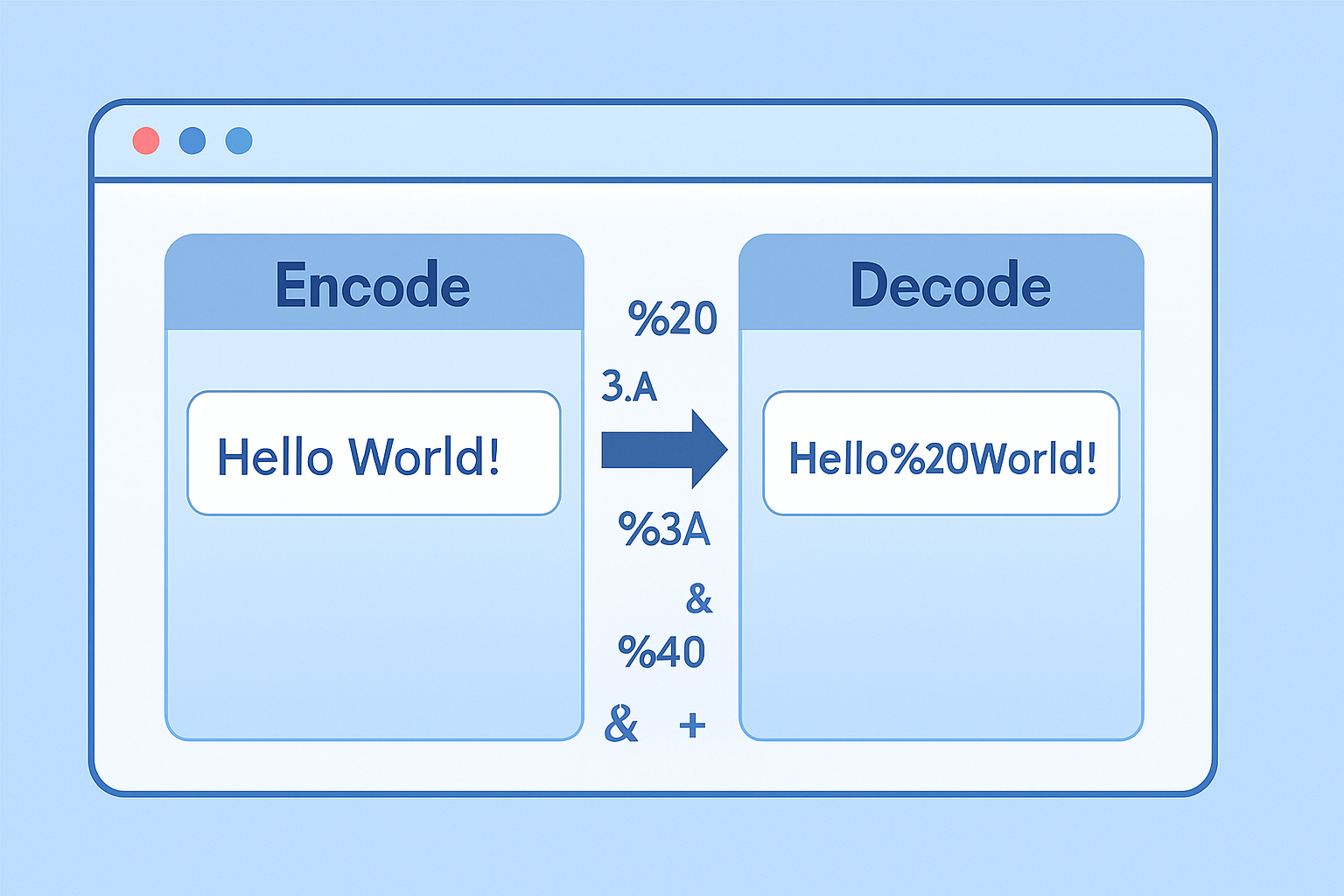
14
How to Use a URL Encoder and Decoder (Complete 2025 Guide)
Ever noticed strange symbols like %20 or %3A in web URLs? That’s URL encoding in action! In this 2025 guide, you’ll learn what URL encoding and decoding mean, why they’re essential for web developers and SEO experts, and how to use free online URL Encoder and Decoder tools on recipeace.blog for quick, secure conversions.
Introduction: Why URL Encoding Matters in 2025
If you’ve ever copied a website link that suddenly looks like this:
https://example.com/search?q=web%20tools%20guide
you’ve encountered URL encoding.
In 2025, as web apps, APIs, and analytics tools become more advanced, URL encoding and decoding are vital for ensuring data transfers safely and accurately over the web.
Let’s break down what these processes mean and how to use them properly.
What Is URL Encoding?
URL Encoding converts special characters into a format that can be transmitted safely over the Internet.
Since URLs can only contain certain characters (letters, numbers, and symbols like -, _, ., and ~), other characters must be encoded.
Example:
Space → %20 : → %3A / → %2F @ → %40
So a URL like:
https://recipeace.blog/encode url tool
becomes:
https://recipeace.blog/encode%20url%20tool
This ensures browsers, servers, and APIs interpret it correctly.
Why URL Encoding Is Important
- Data Safety: Keeps URLs clean and readable by web servers.
- SEO Optimization: Prevents broken links caused by invalid characters.
- Compatibility: Works across browsers and programming languages.
- APIs and Web Forms: Encodes data in GET/POST requests.
Without encoding, your links may break or return 404 errors.
What Is URL Decoding?
The reverse process of encoding — URL Decoding converts encoded symbols (like %20) back into readable text (like a space).
Example:
Encoded: Hello%20World Decoded: Hello World
URL Decoding is essential when retrieving or processing data sent via URLs, forms, or API endpoints.
How to Use a URL Encoder and Decoder (Step-by-Step)
You can easily encode or decode URLs using free tools on recipeace.blog.
Step 1: Open the Tool
Go to:
URL Encoder & Decoder
Step 2: Choose Your Action
- Click Encode to convert readable text into URL format.
- Click Decode to convert encoded URLs back into normal text.
Step 3: Paste Your Data
Enter the text or link you want to process in the text area.
Step 4: Get Results
Click the corresponding button and copy your clean, encoded, or decoded output instantly.
That’s it! No installation, no registration.
How URL Encoding Works Technically
URLs are transmitted using the ASCII character set.
Any unsafe character (non-ASCII) is replaced with a percent sign (%) followed by two hexadecimal digits representing its ASCII code.
Example:
- Space ( ) → %20
- Exclamation mark (!) → %21
- Ampersand (&) → %26
This process is called Percent-Encoding and is defined in the RFC 3986 standard.
Use Cases for URL Encoding & Decoding
1. Web Development
Prevent URL breakage when passing query strings like:
https://example.com/?name=John Doe&city=New York
After encoding:
https://example.com/?name=John%20Doe&city=New%20York
2. API Requests
APIs often require encoded parameters to prevent errors in transmission.
3. Security
Encoding reduces the risk of XSS (Cross-Site Scripting) and SQL injection by sanitizing input data.
4. SEO & Analytics
Ensures that links with special characters are tracked properly in analytics tools like Google Search Console or GA4.
Common Characters That Need Encoding
CharacterEncoded FormMeaningSpace | %20 | Space in query string
! | %21 | Exclamation mark
# | %23 | Fragment indicator
& | %26 | Parameter separator
= | %3D | Value assignment
? | %3F | Start of query string
@ | %40 | Email separator
+ | %2B | Plus sign
Quick Example
Input Text
https://recipeace.blog/learn coding online
Encoded Output
https://recipeace.blog/learn%20coding%20online
Decoded Back
https://recipeace.blog/learn coding online
Best Practices for Using URL Encoder/Decoder Tools
Always verify encoded URLs before publishing.
Avoid double encoding (%2520 instead of %20).
Use UTF-8 character encoding for international text.
Decode URLs when analyzing web logs or analytics data.
Bonus: Developer Use in Code
JavaScript Example
encodeURIComponent("hello world!");
// Output: hello%20world!
Python Example
import urllib.parse
urllib.parse.quote("hello world!")
# Output: 'hello%20world%21'
FAQs
Q: Is URL encoding the same as HTML encoding?
A: No. HTML encoding is for browser rendering (< → <), while URL encoding is for transmitting data safely.
Q: Can URL encoding hide information?
A: No, it only formats data — not encrypts it.
Q: Do spaces always become %20?
A: Yes, though some systems use + for spaces in query strings.
Conclusion
URL Encoding and Decoding are simple but essential for every web user and developer in 2025.
They keep your data safe, your links working, and your websites SEO-friendly.
Use the free URL Encoder & Decoder Tool
to easily encode and decode any text, link, or data in
Contact
Missing something?
Feel free to request missing tools or give some feedback using our contact form.
Contact Us